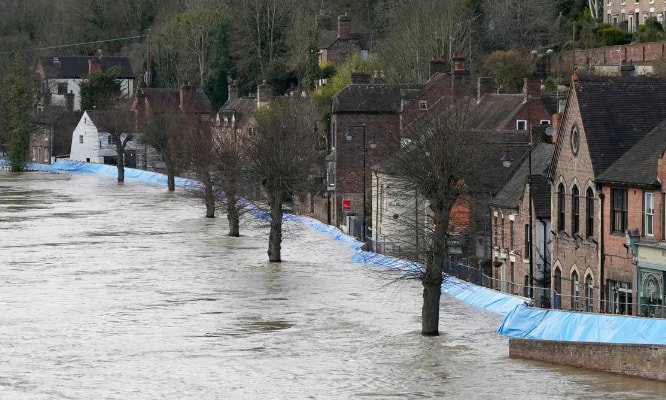Natural disasters can strike without warning and have devastating consequences. Floods are among the most destructive and common types of natural disasters, affecting millions of people each year.
In addition to causing damage to infrastructure and property, floods also pose a significant threat to human lives. As such, individuals and communities must take preventative measures against flooding.
In this blog post, we will discuss some of the most effective flood prevention measures that can be implemented to keep communities safe and minimize the impact of floods.

Understanding Floods
Before diving into preventative measures, it is essential to have a basic understanding of what floods are and how they occur. A flood is an overflow of water on land that is usually dry. It can be caused by heavy rainfall, river overflow, storm surge, or a dam/levee failure.
Floods can happen quickly and with little warning, making them particularly dangerous. They can also have long-lasting effects on the affected areas, including damage to properties and infrastructure as well as disruption of essential services such as electricity and clean water supply.
Effective Flood Prevention Measures
Have an Emergency Plan in Place
The first step in preventing flood-related damage is to have a well-thought-out emergency plan in place. This plan should include evacuation procedures, emergency contact numbers, and designated meeting points for family members or community members.
Having a clear and concise plan can help minimize panic and confusion during a flood event and ensure that everyone knows what to do to stay safe.
Maintain Drainage Systems
Proper maintenance of drainage systems is crucial in preventing floods, especially in urban areas where impervious surfaces such as concrete and asphalt can cause excess stormwater runoff.
Regular cleaning and clearing of debris from gutters, drains, and other drainage structures can help ensure that water can flow freely and reduce the risk of flooding.
Elevate Electrical Systems
Electrical systems, including outlets and switches, should be elevated above flood level to prevent damage and reduce the risk of electrocution. This is especially important in areas prone to frequent flooding.
Additionally, consider installing a sump pump or flood sensors in your electrical system to automatically shut off power in case of rising water levels.
Store Important Documents and Valuables Safely
In the event of a flood, it is crucial to have important documents such as passports, insurance policies, and identification cards stored safely. Consider keeping them in a waterproof folder or container, or storing digital copies in a secure online location.
Valuable items such as jewelry and family heirlooms should also be kept in a safe place, ideally elevated from flood-prone areas.
Invest in Flood Insurance
Homeowners’ insurance policies typically do not cover damage caused by floods, so it is essential to invest in separate flood insurance. This can help cover the costs of repairs and replacements in case of flood-related damage to your property.
It is also important to review your policy regularly and ensure that you have adequate coverage for your property and belongings.
Build Flood Walls or Barriers
For areas that are highly susceptible to flooding, building flood walls or barriers can be an effective preventative measure. These structures are designed to redirect or contain floodwater, minimizing its impact on nearby properties and infrastructure.
It is crucial to consult with a professional engineer before building any flood control structures, as they require proper planning and design to be effective.
Elevate or Flood-Proof Your Property
If you live in an area with a high risk of flooding, elevating your property above flood level can help prevent damage. This can involve raising the foundation, installing barriers, or using flood-proofing materials such as sealants and coatings.
Consult with a professional contractor to determine the best methods for your property.
Practice Sustainable Landscaping
Landscaping can play a significant role in flood prevention. By using sustainable landscaping practices, such as planting native vegetation and building rain gardens, you can help absorb excess water and reduce runoff.
Avoiding impervious surfaces such as concrete or asphalt in your landscaping design can also help prevent excessive stormwater runoff and reduce the risk of flooding.
Environmental Monitoring
Essential flood prevention relies on monitoring water levels in rivers, lakes, and bodies of water. Devices like level transmitters provide real-time data to warning systems, enabling communities to take proactive steps and prevent flooding.
Conclusion
Flood prevention is a crucial aspect of keeping communities safe and minimizing the impact of natural disasters. By understanding how floods occur and implementing effective preventative measures, we can help protect our properties, infrastructure, and most importantly, human lives.
Whether it’s having an emergency plan in place or investing in flood insurance, taking proactive steps can make a significant difference in mitigating the effects of flooding. Remember, it’s always better to be prepared than caught off guard during a flood event.
Disclosure: The articles, guides and reviews on BlowSEO covering topics like SEO, digital marketing, technology, business, finance, streaming sites, travel and more are created by experienced professionals, marketers, developers and finance experts. Our goal is to provide helpful, in-depth, and well-researched content to our readers. You can learn more about our writers and the process we follow to create quality content by visiting our About Us and Content Creation Methodology pages.
